#Northeast Iran
Text
Zoroastrianism: 4000 Years of Faith, Fire and the Battle Between Good and Evil | Ancient Origins
Zoroastrianism: 4000 Years of Faith, Fire and the Battle Between Good and Evil | Ancient Origins
https://www.ancient-origins.net/human-origins-religions/zoroastrianism-0016069

View On WordPress
#1200 BC#1500 BC#600 BC#650 BC#Ahriman#Ahura Mazda#Amesha Spentas#Angra Mainyu#Bronze Age#Daevas#Fire Temple#Haoma plant#Iranian New Year#Khordad Sal#Kusti#monotheism#monotheistic#Northeast Iran#Nowruz#Persia#polytheism#polytheistic#Prophet#Southwest Afghanistan#Sudreh#The Gathas#Zarathustra#Zoroaster#Zoroastrianism
0 notes
Text

Beautiful camera trap photo of a young Persian leopard in the northeast of Iran.
Photo 📸 @babakwlp
107 notes
·
View notes
Text
Countries that are no more: Achaemenid Empire (550BC-330BC)
It was not the first empire of Iranian peoples, but it arose as probably the greatest in terms of influence and became the measure by which all subsequent Iranian empires tended to compare themselves and its influence on culture, government & civil infrastructure would influence others beyond the span of its territory and the span of time. This is the Achaemenid Empire.
Name: In Old Persian it was known as Xšāça or the "The Kingdom or the Empire", it was named the Achaemenid Empire by later historians. Named after the ruling dynasty established by its founder Cyrus the Great who cited the name of his ancestor Haxāmaniš or Achaemenes in Greek as progenitor of the dynasty. It is sometimes also referred to as the First Persian Empire. The Greeks simply referred to it as Persia, the name which stuck for the geographic area of the Iranian plateau well into the modern era.
Language: Old Persian & Aramaic were the official languages. With Old Persian being an Iranian language that was the dynastic language of the Achaemenid ruling dynasty and the language of the Persians, an Iranian people who settled in what is now the southwestern Iranian plateau or southwest Iran circa 1,000 BC. Aramaic was a Semitic language that was the common and administrative language of the prior Neo-Assyrian & Neo-Babylonian Empires which centered in Mesopotamia or modern Iraq, Syria & Anatolian Turkey. After the Persian conquest of Babylon, the use of Aramaic remained the common tongue within the Mesopotamian regions of the empire, eventually becoming a lingua franca across the land. As the empire spread over a vast area and became increasingly multiethnic & multicultural, it absorbed many other languages among its subject peoples. These included the Semitic languages Akkadian, Phoenician & Hebrew. The Iranian language of Median among other regional Iranian languages (Sogdian, Bactrian etc). Various Anatolian languages, Elamite, Thracian & Greek among others.
Territory: 5.5 million kilometers squared or 2.1 million square miles at its peak circa 500BC. The Achaemenid Empire spanned from southern Europe in the Balkans (Greece, Bulgaria, European Turkey) & northwest Africa (Egypt, Libya & Sudan) in the west to its eastern stretches in the Indus Valley (Pakistan) to parts of Central Asia in the northeast. It was centered firstly in the Iranian Plateau (Iran) but also held capitals in Mesopotamia (Iraq). Territory was also found in parts of the Arabian Peninsula & the Caucausus Mountains.
Symbols & Mottos: The Shahbaz or Derafsh Shahbaz was used as the standard of Cyrus the Great, founder of the empire. It depicts a bird of prey, typically believed to be a falcon or hawk (occasionally an eagle) sometimes rendered gold against a red backdrop and depicts the bird holding two orbs in its talons and adorned with an orb likewise above its head. The symbolism was meant to depict the bird guiding the Iranian peoples to conquest and to showcase aggression & strength coupled with dignity. The imperial family often kept falcons for the pastime of falconry.
Religion: The ancient Iranian religion of Zoroastrianism served as the official religion of the empire. It was adopted among the Persian elite & and had its unique beliefs but also helped introduce the concept of free-will among its believers, an idea to influence Judaism, Christianity & Islam in later centuries. Despite this official religion, there was a tolerance for local practices within the subject regions of the empire. The ancient Mesopotamian religion in Babylon & Assyria, Judaism, the Ancient Greek & Egyptian religions & Vedic Hinduism in India was likewise tolerated as well. The tolerance of the Achaemenids was considered a relative hallmark of their dynasty from the start. Famously, in the Old Testament of the Bible it was said that it was Cyrus the Great who freed the Jews from their Babylonian captivity and allowed them to return to their homeland of Judea in modern Israel.
Currency: Gold & silver or bimetallic use of coins became standard within the empire. The gold coins were later referred to as daric and silver as siglos. The main monetary production changes came during the rule of Darius I (522BC-486BC). Originally, they had followed the Lydian practice out of Anatolia of producing coins with gold, but the practice was simplified & refined under the Achaemenids.
Population: The estimates vary ranging from a low end of 17 million to 35 million people on the upper end circa 500BC. The official numbers are hard to determine with certainty but are generally accepted in the tens of millions with the aforementioned 17-35 million being the most reasonable range based on available sources.
Government: The government of the Achaemenid Empire was a hereditary monarchy ruled by a king or shah or later referred to as the ShahanShah or King of Kings, this is roughly equivalent to later use of the term Emperor. Achaemenid rulers due the unprecedented size of their empire held a host of titles which varied overtime but included: King of Kings, Great King, King of Persia, King of Babylon, Pharaoh of Egypt, King of the World, King of the Universe or King of Countries. Cyrus the Great founded the dynasty with his conquest first of the Median Empire and subsequently the Neo-Babylonians and Lydians. He established four different capitals from which to rule: Pasargadae as his first in Persia (southwest central Iran), Ecbatana taken from the Medians in western Iran's Zagros Mountains. The other two capitals being Susa in southwest Iran near and Babylon in modern Iraq which was taken from the Neo-Babylonians. Later Persepolis was made a ceremonial capital too. The ShahanShah or King of Kings was also coupled with the concept of divine rule or the divinity of kings, a concept that was to prove influential in other territories for centuries to come.
While ultimate authority resided with the King of Kings and their bureaucracy could be at times fairly centralized. There was an expansive regional bureaucracy that had a degree of autonomy under the satrapy system. The satraps were the regional governors in service to the King of Kings. The Median Empire had satraps before the Persians but used local kings they conquered as client kings. The Persians did not allow this because of the divine reverence for their ShahanShah. Cyrus the Great established governors as non-royal viceroys on his behalf, though in practice they could rule like kings in all but name for their respective regions. Their administration was over their respective region which varied overtime from 26 to 36 under Darius I. Satraps collected taxes, acted as head over local leaders and bureaucracy, served as supreme judge in their region to settle disputes and criminal cases. They also had to protect the road & postal system established by the King of Kings from bandits and rebels. A council of Persians were sent to assist the satrap with administration, but locals (non-Persian) could likewise be admitted these councils. To ensure loyalty to the ShahanShah, royal secretaries & emissaries were sent as well to support & report back the condition of each satrapy. The so called "eye of the king" made annual inspections of the satrapy to ensure its good condition met the King of Kings' expectations.
Generals in chief were originally made separate to the satrap to divide the civil and military spheres of government & were responsible for military recruitment but in time if central authority from the ShahanShah waned, these could be fused into one with the satrap and general in chiefs becoming hereditary positions.
To convey messages across the widespread road system built within the empire, including the impressive 2,700 km Royal Road which spanned from Susa in Iran to Sardis in Western Anatolia, the angarium (Greek word) were an institution of royal messengers mounted on horseback to ride to the reaches of the empire conveying postage. They were exclusively loyal to the King of Kings. It is said a message could be reached to anywhere within the empire within 15 days to the empire's vast system of relay stations, passing message from rider to rider along its main roads.
Military: The military of the Achaemenids consisted of mostly land based forces: infantry & cavalry but did also eventually include a navy.
Its most famous unit was the 10,000-man strong Immortals. The Immortals were used as elite heavy infantry were ornately dressed. They were said to be constantly as 10,000 men because for any man killed, he was immediately replaced. Armed with shields, scale armor and with a variety of weapons from short spears to swords, daggers, slings, bows & arrows.
The sparabara were the first line of infantry armed with shields and spears. These served as the backbone of the army. Forming shield walls to defend the Persian archers. They were said to ably handle most opponents and could stop enemy arrows though their shields were vulnerable to enemy spears.
There was also the takabara light infantry and though is little known of them it seems they served as garrison troops and skirmishers akin to the Greek peltast of the age.
The cavalry consisted of four distinct groups: chariot driven archers used to shoot down and break up enemy formations, ideally on flat grounds. There was also the traditional horse mounted cavalry and also camel mounted cavalry, both served the traditional cavalry functions and fielded a mix of armor and weapons. Finally, there was the use of war elephants which were brought in from India on the empire's eastern reaches. These provided archers and a massive way to physically & psychologically break opposing forces.
The navy was utilized upon the empire's reaching the Mediterranean and engaged in both battles at sea and for troop transport to areas where troops needing deploying overseas, namely in Greece.
The ethnic composition of Achaemenid military was quite varied ranging from a Persian core with other Iranian peoples such as the Medians, Sogdian, Bactrians and Scythians joining at various times. Others including Anatolians, Assyrians, Babylonians, Anatolians, Indians, Arabs, Jews, Phoenicians, Thracians, Egyptians, Ethiopians, Libyans & Greeks among others.
Their opponents ranged from the various peoples they conquered starting with the Persian conquest of the Medians to the Neo-Babylonians, Lydians, Thracians, Greeks, Egyptians, Arabs & Indians and various others. A hallmark of the empire was to allow the local traditions of subjugated areas to persist so long as garrisons were maintained, taxes were collected, local forces provided levies to the military in times of war, and they did not rebel against the central authority.
Economy: Because of the efficient and extensive road system within the vast empire, trade flourished in a way not yet seen in the varied regions it encompassed. Tax districts were established with the satrapies and could be collected with relative efficiency. Commodities such as gold & jewels from India to the grains of the Nile River valley in Egypt & the dyes of the Phoenicians passed throughout the realm's reaches. Tariffs on trade & agricultural produce provided revenue for the state.
Lifespan: The empire was founded by Cyrus the Great circa 550BC with his eventual conquest of the Median & Lydian Empires. He started out as Cyrus II, King of Persia a client kingdom of the Median Empire. His reign starting in 559BC. Having overthrown and overtaken the Medians, he turned his attention Lydia and the rest of Anatolia (Asia Minor). He later attacked the Eastern Iranian peoples in Bactria, Sogdia and others. He also crossed the Hindu Kush mountains and attacked the Indus Valley getting tribute from various cities.
Cyrus then turned his attention to the west by dealing with the Neo-Babylonian Empire. Following his victory in 539BC at the Battle of Opis, the Persians conquered the Babylonia with relative quickness.
By the time of Cyrus's death his empire had the largest recorded in world history up to that point spanning from Anatolia to the Indus.
Cyrus was succeeded by his sons Cambyses II and Bardiya. Bardiya was replaced by his distant cousin Darius I also known as Darius the Great, whose lineage would constitute a number of the subsequent King of Kings.
Darius faced many rebellions which he put down in succession. His reign is marked by changes to the currency and the largest territorial expansion of the empire. An empire at its absolute zenith. He conquered large swaths of Egypt, the Indus Valley, European Scythia, Thrace & Greece. He also had exploration of the Indian Ocean from the Indus River to Suez Egypt undertaken.
The Greek kingdom of Macedon in the north reaches of the Hellenic world voluntarily became a vassal of Persia in order to avoid destruction. This would prove to be a fateful first contact with this polity that would in time unite the Greek-speaking world in the conquest of the Achaemenid Empire. However, at the time of Darius I's the reign, there were no early indications of this course of events as Macedon was considered even by other Greek states a relative backwater.
Nevertheless, the Battle of Marathon in 490BC halted the conquest of mainland Greece for a decade and showed a check on Persia's power in ways not yet seen. It is also regarded as preserving Classical Greek civilization and is celebrated to this day as an important in the annals of Western civilization more broadly given Classical Greece & in particular Athens's influence on western culture and values.
Xerxes I, son of Darius I vowed to conquer Greece and lead a subsequent invasion in 480BC-479BC. Xerxes originally saw the submission of northern Greece including Macedon but was delayed by the Greeks at the Battle of Thermopylae, most famously by Spartan King Leonidas and his small troop (the famed 300). Though the Persians won the battle it was regarded as a costly victory and one that inspired the Greeks to further resistance. Though Athens was sacked & burnt by the Persians, the subsequent victories on sea & land at Salamis & Plataea drove the Persians back from control over Greece. Though war would rage on until 449BC with the expulsion of the Persians from Europe by the Greeks.
However, the Greeks found themselves in a civil war between Athens & Sparta and Persia having resented the Athenian led coalition against their rule which had expelled them from Europe sought to indirectly weaken the Greeks by supporting Greek factions opposed to Athens through political & financial support.
Following this reversal of fortune abroad, the Achaemenid Empire not able to regain its foothold in Europe, turned inward and focused more on its cultural development. Zoroastrianism became the de-facto official religion of the empire. Additionally, architectural achievements and improvements in its many capitals were undertaken which displayed the empire's wealth. Artaxerxes II who reigned from 405BC-358BC had the longest reign of any Achaemenid ruler and it was characterized by relative peace and stability, though he contended with a number of rebellions including the Great Satraps Revolt of 366BC-360BC which took place in Anatolia and Armenia. Though he was successful in putting down the revolt. He also found himself at war with the Spartans and began to sponsor the Athenians and others against them, showcasing the ever dynamic and changing Greco-Persian relations of the time.
Partially for safety reasons, Persepolis was once again made the capital under Artaxerxes II. He helped expand the city and create many of its monuments.
Artaxerxes III feared the satraps could no longer be trusted in western Asia and ordered their armies disbanded. He faced a campaign against them which suffered some initial defeats before overcoming these rebellions, some leaders of which sought asylum in the Kingom of Macedon under its ruler Philip II (father of Alexander the Great).
Meanwhile, Egypt had effectively become independent from central Achaemenid rule and Artaxerxes III reinvaded in around 340BC-339BC. He faced stiff resistance at times but overcame the Egyptians and the last native Egyptian Pharaoh Nectanebo II was driven from power. From that time on ancient Egypt would be ruled by foreigners who held the title Pharaoh.
Artaxerxes III also faced rebellion from the Phoenicians and originally was ejected from the area of modern coastal Lebanon, Syria & Israel but came back with a large army subsequently reconquered the area including burning the Phoenician city of Sidon down which killed thousands.
Following Artaxerxes III's death his son succeeded him but a case of political intrigue & dynastic murder followed. Eventually Darius III a distant relation within the dynasty took the throne in 336BC hoping to give his reign an element of stability.
Meanwhile in Greece, due to the military reforms and innovations of Philip II, King of Macedon, the Greek speaking world was now unified under Macedon's hegemony. With Philip II holding the title of Hegemon of the Hellenic League, a relatively unified coalition of Greek kingdoms and city-states under Macedon premiership that formed to eventually invade Persia. However, Philip was murdered before his planned invasion of Asia Minor (the Achaemenid's westernmost territory) could commence. His son Alexander III (Alexander the Great) took his father's reforms and consolidated his hold over Greece before crossing over to Anatolia himself.
Darius III had just finished reconquering some rebelling vestiges of Egypt when Alexander army crossed over into Asia Minor circa 334BC. Over the course of 10 years Alexander's major project unfolded, the Macedonian conquest of the Persian Empire. He famously defeated Persians at Granicus, Issus and Gaugamela. The latter two battles against Darius III in person. He took the King of Kings family hostage but treated them well while Darius evacuated to the far eastern reaches of his empire to evade capture. He was subsequently killed by one of his relatives & satraps Bessus, whom Alexander eventually had killed. Bessus had declared himself King of Kings though this wasn't widely recognized and most historians regard Darius III, the last legitimate ShahanShah of Achaemenids.
Alexander had taken Babylon, Susa & Persepolis by 330BC and effectively himself was now ruler of the Persian Empire or at least its western half. In addition to being King of Macedon & Hegemon of the Hellenic League, he gained the titles King of Persia, Pharaoh of Egypt & Lord of Asia. Alexander would in time eventually subdue the eastern portions of the Achaemenid realm including parts of the Indus Valley before turning back to Persia and Babylon where he subsequently became ill and died in June 323BC at age 32. Alexander's intentions it appears were never to replace the Achaemenid government & cultural structure, in fact he planned to maintain and hybridize it with his native Greek culture. He was in fact an admirer of Cyrus the Great (even restoring his tomb after looting) & adopted many Persian customs and dress. He even allowed the Persians to practice their religion and had Persian and Greeks start to serve together in his army. Following his death and with no established successor meant the empire he established which essentially was the whole Achaemenid Empire's territory in addition to the Hellenic world fragmented into different areas run by his most trusted generals who established their own dynasties. The Asian territories from Anatolia to the Indus (including Iran and Mesopotamia) gave way to the Hellenic ruled Seleucid Empire while Egypt became the Hellenic ruled Ptolemaic Kingdom. The synthesis of Persian and Greek cultures continued in the Seleucid and Greco-Bactrian kingdoms of antiquity.
The Achaemenid Empire lasted for a little over two centuries (550BC-330BC) but it casted a long shadow over history. Its influence on Iran alone has persisted into the modern age with every subsequent Persian Empire claiming to be its rightful successor from the Parthian & Sasanian Empires of pre-Islamic Iran to the Safavids of the 16th-18th century and the usage of the title Shah until the last Shah's ejection from power in the 1979 Islamic Revolution. Even the modern Islamic Republic of Iran uses Achaemenid imagery in some military regiments and plays up its importance in tourism and museums as a source of pride to Persian (Farsi) & indeed Iranian heritage. Likewise, its form of governance and the pushing of the concept of divine rights of kings would transplant from its Greek conquerors into the rest of Europe along with various other institutions such as its road & mail system, tax collection & flourishing trade. Its mix of centralized & decentralized governance. Its religious & cultural tolerance of local regions even after their conquest would likewise serve as a template for other empires throughout history too. The Achaemenid Empire served as a template for vast international & transcontinental empires that would follow in its wake & surpass its size & scope of influence. However, it is worth studying for in its time, it was unprecedented, and its innovations so admired by the likes of Alexander the Great and others echo into the modern era.
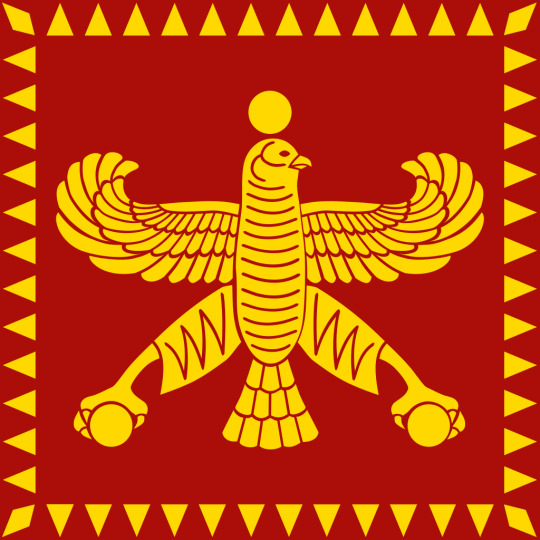
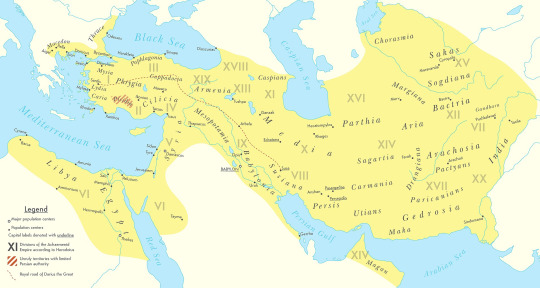


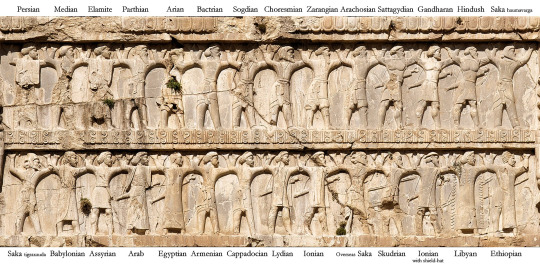
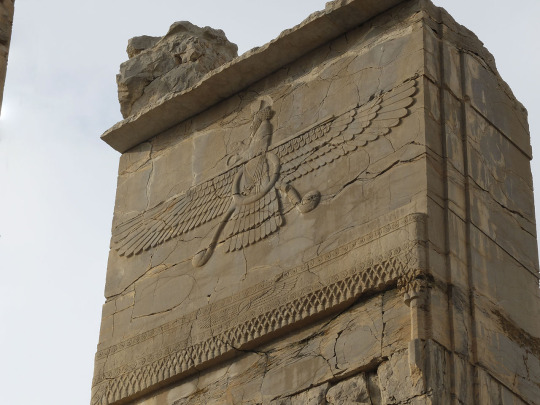




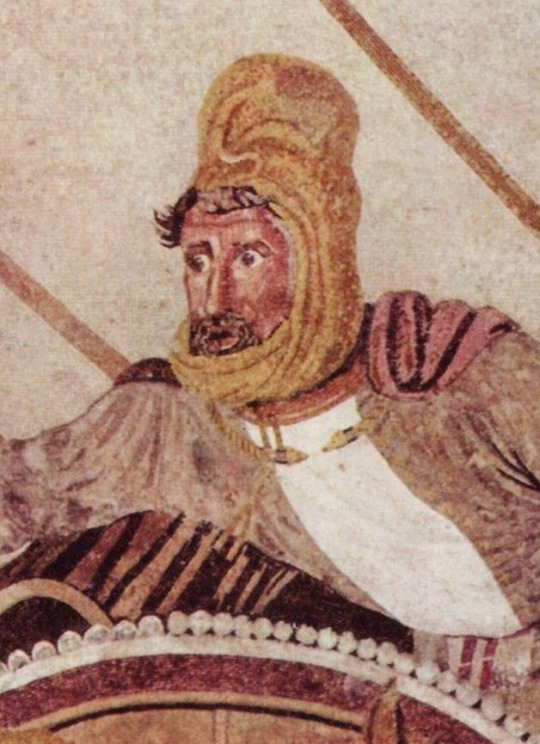
#military history#antiquity#iran#greece#ancient greece#classical greece#ancient ruins#ancient iran#ancient persia#achaemenid#persia#zoroastrianism#alexander the great#cyrus the great#xerxes#artwork#government#history#persian empire#ancient egypt
89 notes
·
View notes
Text
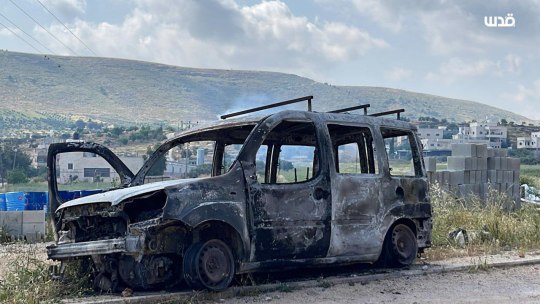


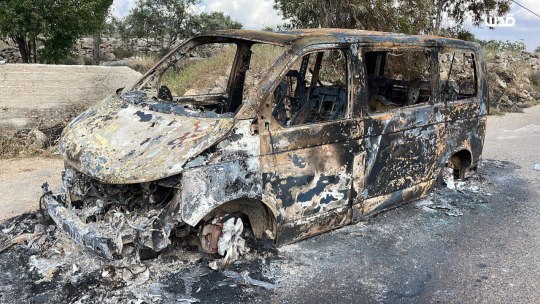
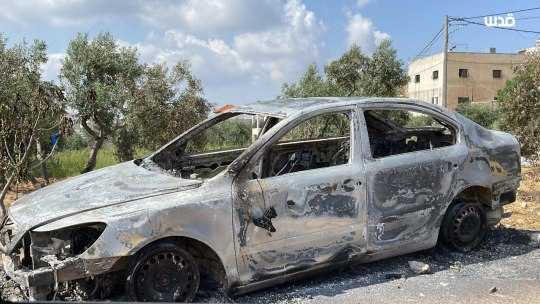

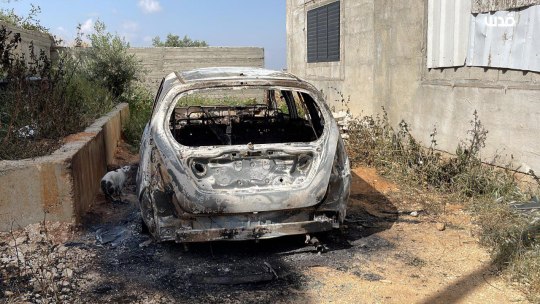
[ 📹 Scenes from Al-Rashid Street where the Israeli occupation army opened fire with artillery shells, toxic tear gas, and live bullets towards displaced Palestinian civilians hoping to cross into the northern Gaza Strip to return to their damaged and destroyed homes in Gaza City. Social media rumors had suggested some civilians were being allowed to cross into the north. However, the information was incorrect and occupation forces immediately opened fire on the civilians. 📸 Just some of the results in the town of Duma following an unprecedented scale attack on several Palestinian towns and villages in the occupied West Bank, where Zionist colonial settlers burned Palestinian homes and vehicles.]
🇮🇱⚔️🇵🇸 🚀🚀🚀 🚨
DAY 191: IRAN LAUNCHES MISSILE STRIKE ON ISRAELI OCCUPATION, SETTLER VIOLENCE IN THE WEST BANK, IOF TARGETS DISPLACED CIVILIANS
On the 191st day of Israel's ongoing special genocide operation in the Gaza Strip, the Israeli occupation forces (IOF) committed a total of 4 new massacres of Palestinian families, resulting in the deaths of no less than 43 Palestinians, mostly women and children, while another 62 others have been wounded over the previous 24-hours.
Beginning in the early morning hours of Sunday, Iran launched a large-scale combined missile and drone strike targeting the occupied Palestinian territories in response for the Israeli occupation's missile strike on the Consulate section of the Iranian embassy in Damascus, Syria, killing at least two high-ranking IRGC commanders and at least 5 others.
According to some sources, as many as 300 missiles and drones were fired by the Islamic Revolutionary Guard Corps (IRGC) into the occupied territories, with at least 7 missiles successfully hitting targets at the Ramon Airbase in the Negev desert, while another 15 missiles are said to have reached the Nevatim Airbase in the south of the occupied territories, also in the Negev desert, near Beersheba, where the Zionist occupation keeps most of its fleet of F-35 fighter jets.
As the missiles and drones flew over the heads of the civilian populations of Israeli-occupied Palestine, as well as the West Bank and Gaza, hundreds of Israeli civilians could be seen screaming and panicking in the streets, stampeding one another to reach shelter from the missiles, which were precisely targeted to avoid civilian harm, while the Palestinian civilian population celebrated in the streets, waving the Palestinian flag and honking their car horns.
In response to the Iranian missile strikes, which coincided with several rocket barrages fired from southern Lebanon to help drain the Israeli occupation's supply of interceptor missiles from its vaunted Iron Dome air defense system, at dawn, the Israeli occupation air forces bombarded several towns and villages in the south of Lebanon.
According to reports published in the Lebanese National News Agency and expounded upon by the Palestinian news outlet, WAFA, the Israeli occupation bombed a building in the town of Nabi Chit in the Barqaa Governate, in the east of central Lebanon, while occupation warplanes bombed the outskirts of the Mount Safi area, as well as the town of Jbaa in the Tuffah region and in the Deliton area, also on the outskirts of Jbaa, in the south of Lebanon.
Occupation aircraft also fired several missiles and bombs into the towns of Khiam, Kafr Kila, and Al-Odaisseh, while also bombing near several other villages, including Hula, Wadi al-Sluqi, in the vicinity of Deir Mimas, and near the Litani River.
Meanwhile, in occupied Palestine, as a result of Israeli settler violence against the Al-Mughayir Village over the weekend, a village located to the northeast of Ramallah, in the northern occupied West Bank, at least one Palestinian was killed, and at least 45 others were wounded.
Deputy Chairman of the Al-Mughayir Village Council, Marzouq Abu Naim told Palestinian media outlet, WAFA, that in addition to the dead and wounded, at least 16 Palestinian homes were burned, including 10 homes completely burned, while more than 60 Palestinian civilian vehicles were also burned.
The Deputy Chairman added that Israeli colonial settlers had also stolen at least 120 heads of sheep belonging to Palestinian citizen Imad Abu Alia after being assaulted by the settlers, who were backed by IOF soldiers during the attacks.
Settlers also burned 15 sheep pens, in addition to slaughtering 31 sheep belonging to citizen Saleh Suleiman Nasr.
Terrorist attacks by Zionist colonial settlers were also recorded in several towns and villages south of Nablus, including the towns of Duma, Burin, Qaryut, Qasr, and Beit Furik, while to the north and east of Ramallah, settlers attacked the towns of Al-Mughayir, Beitin, Deir Jarir, Silwad, Ein Sinya, Abu Falah, Burqa, Atara, and Al-Mazraa Al-Gharbiyya.
According to the Palestinian Ministry of Health, 464 Palestinian civilians have been killed, while at least 4'800 others have been wounded in the occupied West Bank since the start of Israeli aggression beginning on October 7th, 2023.
In the meantime in the Gaza Strip, a new war crime was recorded, committed by the Israeli occupation army, when Zionist forces opened fire on displaced Palestinian civilians trying to return to Gaza City, leading to the death of at least one woman, while dozens of others were wounded in the attack.
According to local sources, occupation forces stationed near Al-Rashid Street fired artillery shells, live bullets and toxic tear gas towards hundreds of displaced civilians as they made their way towards Gaza City, attempting to return to their destroyed homes in the northern Gaza Strip via the Wadi Gaza Bridge. Only a small number of the civilians succeeded in crossing into the north of Gaza.
According to some sources, social media had reported that the occupation army was allowing small numbers of civilians to cross into the north. However, the information turned out to be false and the IOF soldiers immediately opened fire on anyone that moved near the crossing.
At the same time, IOF warplanes renewed their bombing in the northern Gaza Strip, targeting at least three civilian residences in the city of Beit Hanoun, and wounding at least 8 Palestinian civilians.
Similarly, local civil defense crews recovered the bodies of several Palestinians killed following an Israeli occupation airstrike targeting a residential home belonging to the Abu Ghula family in the New Camp area of the Nuseirat Refugee Camp, in the central Gaza Strip.
As though the horrors inflicted on Palestinians in Gaza by the Zionist forces weren't enough, at least one child was killed and three others wounded after humanitarian aid that had been air dropped into the Gaza Strip failed to open their parachutes, tumbling violently to the ground where it hit a child and injured several others.
Local paramedic crews confirmed the death of a child by the name of Zain Mahmoud Arouq, whom they said died as a result of humanitarian aid falling on him in northern Gaza.
Similarly, it was also reported that three Palestinian children were wounded while attempting to reach humanitarian aid that had fallen into the sea, west of Deir al-Balah, in the central Gaza Strip.
In one of the latest atrocities, the Zionist occupation army bombed several civilian residences in the Nuseirat and Al-Maghazi refugee camps, as well as the town of al-Zahra'a, in the central Gaza Strip, resulting in the martyredom of at least 10 Palestinian civilians, and wounding no less than 20 others, most of whom were transported to Al-Aqsa Martyrs Hospital in nearby Deir al-Balah.
"Israel's" criminal behavior continued when Zionist gunboats fired several artillery shells into residential homes west of the cities of Deir al-Balah and Khan Yunis, destroying the targeted buildings, as well as local civilian infrastructure.
At the same time, Israeli artillery detatchments fired several shells towards residential homes in the towns of Bani Suheila, Abasan and the Al-Zanna neighborhood of Khan Yunis, wounding a number of civilians who were transferred to the Gaza European Hospital near Khan Yunis.
IOF fighter jets also bombarded four residential homes in areas of the Al-Zaytoun, Tal al-Hawa, and Sheikh Ajlin neighborhoods of Gaza City, in the northern Gaza Strip, resulting in various injuries to several civilians.
As a result of "Israel's" ongoing special genocide operation in the Gaza Strip, the death toll among the Palestinian population in Gaza has risen in excess of 33'729 Palestinians martyred, including upwards of 14'500 children and 9'500 women, while an additional 76'371 others have been wounded since the start of the current round of Zionist aggression beginning with the events of October 7th, 2023.
April 14th, 2024.
#source1
#source2
#source3
#source4
#source5
#source6
#source7
#source8
#source9
#source10
#source11
#source12
#videosource
#photosource
@WorkerSolidarityNews
#israeli occupation forces#israeli occupation#palestine#palestine news#palestinians#free palestine#gaza#genocide in gaza#israeli genocide#war crimes#crimes against humanity#gaza news#arab israeli conflict#israel palestine conflict#war#israel#iran#iran news#middle east#regional war#israeli military#genocide#politics#news#geopolitics#world news#global news#international news#breaking news#current events
20 notes
·
View notes
Text

The Pope-Bernheimer Khorasan Kelley, Northeast Persia (Iran), dated 1808
Dorotheum
79 notes
·
View notes
Note
After running away could Desmond be taken in by a small village on top of a mountain? I'm living in a village on a mountain and it's very different from what people really expect. I want Desmond to have daily chores around the village, to experience cooking with everyone with smiles instead of the blank/stoic expressions of the adults on the farm, I want him to run around with the other kids frolicking and climbing and going to rivers and seeing all sorts of animals, I want him to go on weekly supply run to the cities down and just be content. All I'm saying is I want a Desmond who experienced a normal closed community before being thrown into Ac plot.
This would be quite easy to do since the Farm is said to be in Black Hills, South Dakota, and said to be near Rapid City which meant that the Farm would either be west of Northern Hills or Mystic (or the very west tip of Hell Canyon).
I’m unsure of how populated Black Hills would be but its isolated mountain range would help ‘force’ towns/villages to become isolated and self-sufficient.
It should be noted that if we do keep the village in Black Hills, we run the risk of the Assassins figuring out where Desmond was but we can push this aside by either:
(1) Making the Assassins assume Desmond would go straight for the nearest city: Rapid City
(2) The village Desmond found himself in has never been in the Brotherhood’s radar in the first place.
The 2nd reason is unlikely since Bill is too paranoid to not know what was going on in the vicinity of the Farm.
I will suggest that we put it northeast of Bearlodge or southeast of Hell Canyon to add more distance between the village and the Farm.
Of course, if you want to destroy all possibility of the Assassins in the Farm finding him, let’s use Alborz mountain range in Iran instead as no one would think of checking there. Maybe Desmond panicked when he saw the adults from the Farm and hid in one of the containers, not knowing it was being shipped to Iran or something. From there, he just found himself in the nearest city that the village in Alborz would go to for supply run, maybe one of the people in the village in charge of the supply run saw him looking lost and that person knew enough English to suggest Desmond stay with them for a while until he gets his bearings and learn enough of the language to get by.
Putting him in the Alborz mountain range would also give him an added reason to become close to the villagers because he would need to talk to them to learn their language. He can even join the kids in school and any embarrassment he might feel would be minimal because he’d find some happiness in finally going to a ‘normal’ school. So what if his classmates were all younger than him? That just meant he had an excuse to play games with them after class and it won’t look that weird.
Regardless if we’re keeping him in Black Hills or putting him Alborz, here are some things that would stay the same:
He’ll stay with an old couple (or an old widow/widower) who treat him more like a grandson than a stranger or a son. This will give Desmond a sense of what familial love is without overwhelming him (something that can happen if he was put in a big family) or making him compare it to how his parents treated him.
The villagers are looking after Desmond’s old foster family and this would give Desmond chances to get used to how tightly knit the village is.
Desmond helps out in their home, doing chores and such and he’d enjoy how relaxing it is compared to training. He’ll also learn how to cook (or maybe bake?) from his foster parents.
Desmond would be hesitant to go on supply runs and the villagers would start to think that maybe Desmond wasn’t ‘lost’ but something more nefarious might have been his reason to find his way to their village.
Like all mountain village, the children tell Desmond that there’s a ghost or a spirit haunting the forest nearby and during the spooky seasons, they’ll get Desmond to join them in walking into the forest to look around. (up to you if there is something there or it’s just the whole ‘don’t go in the forest or a monster will eat you up’ childish threat parents do)
There will be a grouchy old man who is the oldest in the village and will tell stories of how their village came to existence. This character will be the ‘main’ source of connection between the village and AC lore. If the village is in Black Hills, he will hint on how the village is actually the descendants of the people from Davenport Homestead who followed one of Ratonhnhaké:ton’s descendants into Black Hills because they were running from the Templars or something (maybe even hint on how Bill knew of the perfect location for the Farm because he came from that ancestor). If the village is in Alborz, he will hint how they ran to the mountains because they were chased by the Mongols who wanted them wiped out because the ancestor of the unofficial village leader had killed an important person to the Mongols to protect his people. This would hint that the village may have been descendants of surviving Levantine/Persian Assassins escaping the Mongols and maybe even Darim.
Whether Desmond learns of this or it’s just hinted on is up to you.
If Desmond gets kidnapped in this one, you bet the villagers will definitely look for him because, by the time Desmond is 25, he’s one of them and they take care of their own.
#desmond is raised in a small mountain village#sure he got there at 13#but the village raised him more than bill ever did#ask and answer#assassin's creed#desmond miles#teecup writes/has a plot#fic idea: assassin's creed
76 notes
·
View notes
Text
after centuries of intense speculation and heated debate, a team of researchers have announced that the world's single most perfect animal is a humble and beautiful mallard duck 🦆 living in northeast Iran
79 notes
·
View notes
Text

Gate of All Nations
The Gate of Xerxes -UNESCO World Heritage
(r. 486 – 465 BC) Persepolis - IRAN
The bronze trumpets that once signaled the arrival of important foreign delegations to Persepolis, the ceremonial capital of the mighty Achaemenid Empire, may now be silent, but it is still possible to capture the sense of awe while visiting the colossal Gate of Xerxes.
Built during the reign of Achaemenid king Xerxes I , who called this his Gate of All Nations, the pillared entrance is guarded by bearded and hoofed mythical figures in the style of Assyrian gate-guards.
On arrival at Persepolis one is confronted by an imposing wall, completely smooth and plain, about 15 meters tall: this is the artificial terrace on which the palaces were built. This vast terrace of Persepolis, some 450 meters long and 300 meters wide, was originally fortified on three sides by a tall wall. The only access was from the monumental staircase, which leads to the Gate of All Nations.
The gateway bears a cuneiform inscription in Old Persian, Neo-Babylonian, and Elamite languages declaring, among other things, that Xerxes is responsible for the construction of this and many beautiful wonders in Persia. Centuries of graffitists have also left their mark, including explorer Henry Morton Stanley.
A pair of colossal bulls guarded the western entrance; two man-bulls stood at the eastern doorway. Engraved above each of the four colossi is a trilingual inscription attesting to Xerxes having built and completed the gate. The doorway on the south, opening toward the Apadana, is the widest of the three.
According to sources, pivoting devices found on the inner corners of all the doors indicate that they must have had two-leaved doors, which were probably made of wood and covered with sheets of ornamented metal.
Persepolis, also known as Takht-e Jamshid, whose magnificent ruins rest at the foot of Kuh-e Rahmat ("Mountain of Mercy"), was the ceremonial capital of the Achaemenid Empire. It is situated 60 kilometers northeast of the city of Shiraz in Fars Province.
Persepolis was the seat of the government of the Achaemenid Empire, though it was designed primarily to be a showplace and spectacular center for the receptions and festivals of the kings and their empire.
The royal city ranks among the archaeological sites which have no equivalent, considering its unique architecture, urban planning, construction technology, and art.
The city was burnt by Alexander in 330 BC apparently as revenge to the Persians
The immense terrace of Persepolis was begun about 518 BC by Darius the Great, the Achaemenid Empire’s king. On this terrace, successive kings erected a series of architecturally stunning palatial buildings, among them the massive Apadana palace and the Throne Hall (“Hundred-Column Hall”).
This 13-ha ensemble of majestic approaches, monumental stairways, throne rooms (Apadana), reception rooms, and dependencies is classified among the world’s greatest archaeological sites.
#art#design#doorway#architecture#heavensdoorways#gateway#entryway#iran#persepolis#bull#royal#royal city#style#history#gates of xerses#unesco world heritage#monumental#gate of all nations#achaemenid#persia#xerxes#front door#architrave
49 notes
·
View notes
Photo
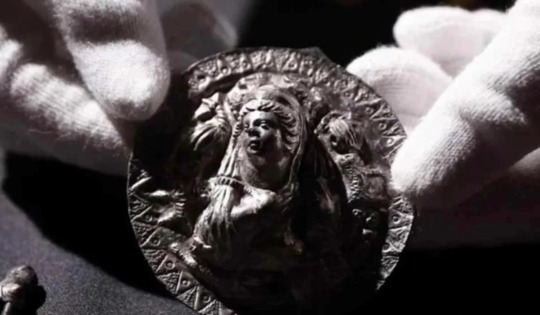

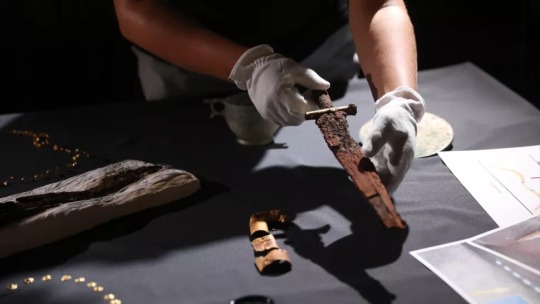

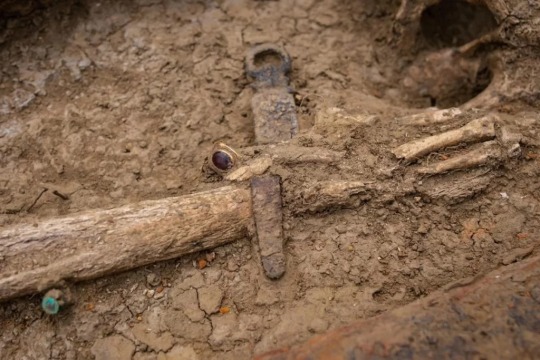
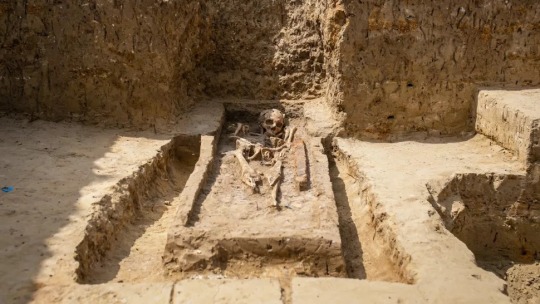

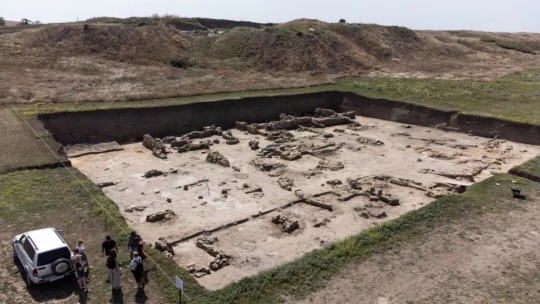
A 2100-Year-Old Medallion of Goddess Aphrodite and a Warrior Tomb Found in Russia
Archaeologists have unearthed a silver medallion depicting the Greek goddess Aphrodite (Roma Venüs) in a 2100-year-old grave of a priestess on the northeast coast of the Black Sea.
The unique medallion depicts ten rather than the known twelve signs of the zodiac and provides insight into religious practices at the time of its creation.
The discovery, in the opinion of archaeologists, raises the possibility that the buried woman was an Aphrodite priestess, the goddess of beauty and love. The rings, silver earrings, and other grave goods that were dedicated to the goddess led to these conclusions.
The grave is among a number of striking finds unearthed this summer at a site near the shore of the Taman Peninsula in southern Russia, east of the Crimean Peninsula and between the Black Sea and the Sea of Azov.
According to the Oleg Deripaska Volnoe Delo Foundation’s spokesman Ruben Bunyatyan, archaeologists Nikolay Sudarev and Mikhail Treister discovered the woman’s grave during the Phanagoria archaeological expedition’s 2022 summer season.
The large medallion is made of silver and shows the goddess Aphrodite in the center, surrounded by symbols portraying 10 signs of the zodiac.
Greek historian, Hecataeus of Miletus, said that Phanagoria was founded in the sixth century B.C. by refugees from Teos, a Greek city on the coast of Anatolia now part of modern-day Turkey.
The Aphrodite medallion is surrounded by 10 embossed symbols that correspond to signs of the zodiac, including a lion for Leo, a bull for Taurus, and a scorpion for Scorpio. But the symbols for the zodiac signs Aquarius and Libra are missing, and the researchers don’t know why.
According to archaeologists, the inclusion of the zodiac indicates the medallion is a portrayal of “Aphrodite Urania” — the heavenly aspect of the goddess, as distinct from her Earthly aspect, “Aphrodite Pandemos.”
It also suggests a belief in astrology, the idea that the positions of celestial bodies can influence events on Earth, which was widespread throughout the ancient world.
The silver medallion found in the early first century B.C. grave shows the embossed head, shoulders, and hands of Aphrodite, based on other contemporary iconographic portrayals.
Such medallions were common in the territory of the Bosporan Kingdom as early as 2,300 years ago, said Maria Chashuk, senior research associate of the Phanagoria archaeological expedition.
The medallion is about 7 centimeters (2.75 inches) in diameter and 15 millimeters thick.
Medallions of the sort were used in many ways: as brooches, as headgear accessories, and as pendants.
Another intriguing find at the Black Sea site was a warrior’s tomb featuring a sword that had been made in early medieval Iran.
The large iron sword was found in the style of swords from the Sassanid, or the second Persian Empire, which ruled the areas of modern-day Iran, Iraq, Turkmenistan, and much of Afghanistan. The researchers think that the sword may have been a diplomatic gift or that it may have been taken as a military trophy.
According to the statement from the Volnoe Delo Foundation, “this massive, expensive and prestigious sword was part of the equipment of the horsemen of the era of the Great Migration,” a period when much of Europe and Western Asia was threatened by invasions of peoples from Central Asia, such as the Huns. The unique find not only reflects the tastes of the late antique warriors of the Taman Peninsula, but also suggests that in the middle of the first millennium Phanagoria had close political and cultural ties with the [Sassanid] Empire,”
The warrior’s tomb (first century B.C.) also contained fragments of a horse’s harness, buckles, belt tips, glass jugs, utensils, and wooden boxes, as well as a pottery jug, beads, a brass mirror, and a pair of iron scissors.
By Leman Altuntaş.
#A 2100-Year-Old Medallion of Goddess Aphrodite and a Warrior Tomb Found in Russia#greek goddess aphrodite#aphrodite priestess#archeology#archeolgst#ancient tomb#ancient grave#ancient artifacts#history#history news#ancient history#ancient culture#ancient artifacts#greek history
156 notes
·
View notes
Text
Today renewable energy is more important than ever, but it’s been around for a long time. The windmills of Chiffon village in Iran have been operating for 1000 years.
65 notes
·
View notes
Note
Okay I'm suddenly having Farangis brainrot and consequently have like, a bucketload of questions. Hear me out.
Was Farangis native to Khuzestan? Was she born elsewhere, sent to a temple from that region, only to be transferred to the temple in Khuzestan or was she from Khuzestan to begin with? I realize this is somewhat of a stupid line of question but whatever! My brain can't help it! I wonder how young she was when her parents died and she was sent to the temple, fairly young? 8-9-ish? Even younger? In her teens? I'm just now pondering in amusement how she ended up on the opposite end of Pars from her homeland— southwest to northeast. Also I planned to have her join the clan around the same time Ranna does: aka when she's about like, 13 and they 7 or so, and have them bond with each other as they get accustomed to their new home, but maybe I should move it up a little, but gah I've gotten so fond of the idea!
I'm not sure there are confirmed answers to many of these questions but let's have look at what the novels say! (These are exactly the sorts of things I wonder about too, so I'm more than happy to look into them.)
I don't recall seeing any direct reference to where Farangis was born. It could have been in the region of Khuzestan, or it could simply be that the cultural importance of the temple at the time was what led to her being sent there. It does seem that she was sent there to be raised immediately after her mother's death, though (her father died earlier, leaving her mother more or less a fortune, half of which her mother instructed to be donated to the temple after her death, while the other half was left for Farangis herself). Her mother asked that the temple support her daughter, presumably because there were no other relatives capable of providing for her, or perhaps because she saw being raised in the temple and becoming a priestess as the choice that provided the best future for her daughter.
The temple of Mithra in Khuzestan was built as a donation to mark the birth of Prince Arslan (ordered by Andragoras himself). Arslan was born in 306, at which time Farangis was around 8. So that's the youngest she could have been when she was sent there, and I do tend to think it was likely to be around that age that her life at the temple began.
This seems like a good place to talk about Khuzestan itself, since I mentioned that geographically it doesn't match up with the real life location. It is an area located east of Ecbatana, west of Peshawar Fortress and just north of the Nimruz Mountains. (That's not super specific, but the comment about the Nimruz range helps the most, especially because that's included on the map from the guide that covers up to Book 10)

(annotated map courtesy of the first fan translation)
As well as being just slightly above just above the Nimruz mountains, if Khuzestan is more or less mid-way between Ecbatana and Peshawar that would make it very close to Soleimaniye's location on the Continental Road.
The Chinese version describes Khuzestan as a 'small town' (小镇) but when checking the Japanese the novel is actually talking about the Khuzestan region (地方) which makes more sense.
Now for a little cypress diversion; we were talking about cypresses being planted around temples in ancient Iran, and although I didn't see a mention of it for the temple of Mithra in Khuzestan, the temple of Ashi in the Oxus region is surrounded by them, so that appears to be a thing in Parsian culture too. (Although this is a female-only temple dedicated to a different god, there's a little more detail of temple life in that section which probably applies to other temples like the one in Khuzestan too, so it's a good section to look at for inspiration for that.)
And also, since I may as well add it to this post after I think I forgot to mention it in comments yesterday, concerning the novel's use of the term magpat for a Parsian high priest, it hasn't come up in manga canon presumably because the time it crops up in the novels is when one of these high-ranking priests betrays Tahamenay's location to Hilmes, when in the manga Arakawa changed it to Husrab. In looking at that scene in the novels again I did see Tanaka gave us a brief description of what that priest was wearing; robes of 'gaudy gold and purple'.
Anyway, I think your proposed timeline for Farangis meeting Ranna in your AU would work! Perhaps the jinn told her to travel that way?
31 notes
·
View notes
Text

In the vast region of Iran, there are still many areas whose beauty and attractions are not well known and neglected, and their effects have not yet been introduced to domestic and foreign tourists, travelers and guests.
The region of Kohgiluyeh and Boyar Ahmad is one of the most beautiful provinces of the country, which is known as the land of four seasons. This province is bordered by Chaharmahal and Bakhtiari provinces in the north, Isfahan province in the northeast, Fars province in the east, Khuzestan province in the west, and Bushehr province in the south. The province of Kohgiluyeh and Boyerahmad is the land of soaring mountains and pristine nature.
The beautiful and spectacular scenery of this land evokes a beautiful magical feeling for domestic and foreign travelers, guests and tourists and depicts the north in the south of Iran.
#iran#nature#beautiful#beautiful place#beauty#natural titts#beauties#mountains#re village#clouds#forest#river#lake#lakers
15 notes
·
View notes
Text

April 17, 2023 - Asian Desert Warbler (Curruca nana)
Breeding from around the Caspian Sea and northeast Iran to central and southern Mongolia and northwest China, these warblers winter from northeast Africa through parts of the Middle East to northwest India. They eat small insects and spiders, along with some seeds and berries, foraging mostly on or near the ground in scrub, grass, and low bushes. Males build the nests from grass stems, twigs, leaves, fibers, down, and sometimes feathers in low scrub. Both parents incubate the clutches of four to six eggs, though females may do most of the incubation.
43 notes
·
View notes
Text
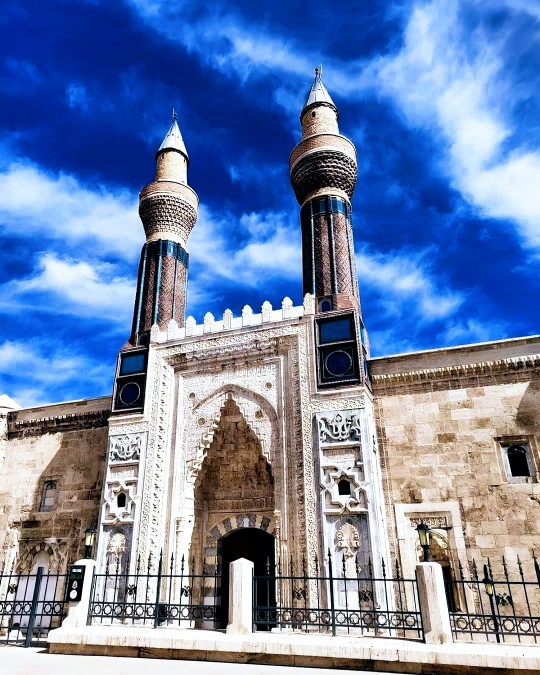
📍 Sivas Gök Medrese
📌Sivas Gök Medrese tarihine Geçmeden önce Anadolu Selçuklu Devletinden bahsedelim. Anadolu Selçuklu Devleti’nin 1243 Kösedağ Savaşıyla Moğollar karşısında yenilgisi sonrasında Anadolu Selçuklu Devleti zayıflamaya başlamıştır.
🔶🔶🔶
📌Anadolu, özellikle 13. yüz yılın ortalarından itibaren İran Merkezli kurulan İlhanlı valileri tarafından yönetilmeye başlanmıştır. Anadolu’nun İlhanlılar tarafından kontrol altında tutulmaya çalışıldığı, vergilerin ağırlaştığı bu dönemde imar faaliyetlerinde Anadolu Selçuklu Sultanlarının etkinliğinin azaldığı bilinmektedir.
🔶🔶🔶
📌Mimari yapılanmada Selçuklu vezirlerinin etkinliklerinin arttığı görülmektedir. Sultan III. Gıyâseddin Keyhüsrev devrinde ( 1259-1284) vezir Fahreddin Ali Bin Hüseyin Sahip Ata, özellikle Konya ve Sivas kentinde çeşitli yapıların baniliğini yapmıştır.
🔶🔶🔶
📌13. yüz yılın ikinci yarısında çoğunlukla İlhanlılar ile iyi geçinmeye çalışan Sahip Ata, Sivas kentinde bugün İç Kale ( Torakkale)’nin kuzeydoğusunda, Kale-i Cedid Mahallesinin doğu sınırında ve kendi adını taşıyan mahalle içinde bir medrese inşa ettirmiştir.
Sivas Gök Medresenin inşa tarihi H. 670/M. 1271’dir.
Yazan: Esra Dumuş- Sanat Tarihi Uzmanı
.........
Sivas Gök Madrasa
📌Before moving on to the history of Sivas Gök Madrasa, let's talk about the Anatolian Seljuk State. After the defeat of the Anatolian Seljuk State against the Mongols in the Battle of Kösedağ in 1243, the Anatolian Seljuk State began to weaken.
📌Anatolia, especially since the middle of the 13th century, started to be governed by the governors of İlhanlı, which was founded in Iran. It is known that the effectiveness of the Anatolian Seljuk Sultans in zoning activities decreased in this period when Anatolia was tried to be kept under control by the Ilkhanate and the taxes were heavy.
It is seen that the activities of the Seljuk viziers have increased in architectural structuring. Sultan III. During the reign of Gıyâseddin Keyhüsrev (1259-1284), the vizier Fahreddin Ali Bin Hüseyin sahibinden Ata was the patron of various buildings, especially in the cities of Konya and Sivas.
📌13. Owner Ata, who mostly tried to get along with the Ilkhanate in the second half of the century, had a madrasah built in the city of Sivas, in the northeast of the İç Kale (Torakkale) today, on the eastern border of the Kale-i Cedid District and in the neighborhood that bears his name.
Sivas Gök Madrasa was built in H. 670/M. It is 1271.
#türkiye#doğa#travel photography#travel destinations#travel#manzara#view#natural#europe#africa#Spotify
46 notes
·
View notes
Text
[ 📹 Footage from the Al-Nuseirat Refugee Camp, in the central Gaza Strip, where the Israeli occupation army targeted and destroyed two residential buildings in the Camp earlier this morning, killing and wounding several Palestinian civilians.]
🇮🇱⚔️🇵🇸 🚀🏘️💥🚑 🚨
ISRAELI SETTLERS LAUNCH POGROMS ON WEST BANK VILLAGES, IRAN SEIZES ISRAELI VESSEL, DESTRUCTION OF AL-ZAHRAA IN GAZA COMPLETE AS CONFLICTS SPIRAL OUT OF CONTROL
On the 190th day of "Israel's" special genocide operation in the Gaza Strip, the Israeli occupation forces committed a total of 5 new massacres of Palestinian families, resulting in the deaths of no less than 52 Palestinians, the majority being women and children, while another 95 others were wounded over the previous 24-hours.
In response to constant Israeli aggression, and the recent Zionist attack on the Consulate section of the Iranian embassy in Damascus, Syria, the Iranian military, known as the Islamic Revolutionary Guard Corps (IRGC), hijacked an Israeli commercial vessel from the Straight of Hormuz on Saturday, which was covered in a news piece published by Iran's Tasnim news agency.
According to Tasnim, the IRGC seized the MSC Aries, which flies the Portuguese flag, a container ship linked with the London-based Zodiac Maritime, a subsidiary of the Israeli billionaire Eyal Ofer's Zodiac Group.
Tasnim says the vessel was in the waters off the coast of Dubai, heading through the Straight of Hormuz with its transponder turned off at the time it was seized, apparently a common tactic of Israeli-owned or operated ships.
Meanwhile, hundreds of Israeli colonial settlers and their organized militias launched a pogrom against several Palestinian towns and villages across the occupied West Bank of Palestine.
According to reports, armed Zionist colonial settlers, backed by the Israeli occupation forces, launched several large-scale assaults on Palestinians and their property, including the firing of live bullets towards Palestinians civilians and their vehicles, as well as burning Palestinian homes and cars.
The raid began on Friday with attacks on the town of Al-Mughayir and Abu Falah, northeast of Ramallah, which saw violent assaults on Palestinian families, including gunfire directed at Palestinian homes and vehicles, as well as the burning of several homes and cars, and was soon followed by attacks on the village of Duma, southeast of Nablus, in the northern occupied West Bank, with similar results.
At least one Palestinian, by the name of Jihad Afif Abu Alia, was killed in the assault, while at least 25 others were wounded by the colonists, who were actively being protected by IOF soldiers.
Attacks also occured on the villages and towns of Turmus Ayya, Abu Falah, Silwad, and several villages east of Ramallah, while attacks also occured on multiple villages north of Nablus, specifically the towns of Bitlo, Kafr Ni'ma, as well as several other areas west of Nablus.
In response the pogroms, the largest of their kind since the October 7th attacks by Hamas, the National and Islamic Forces of Ramallah and al-Bireh called for confronting the settler militias and activating the Popular Guard committees.
Calling the attacks "terrorism and brutality," the defensive organization said Israeli settlers were attempting to force Palestinian citizens to leave their homes in the hope of seizing their lands.
In a statement issued by the defense forces, the group urged Palestinian residents to maintain a state of alertness, calling for "constant and continuous vigilance" to "thwart malicious plans aimed at uprooting our people from their land, and to work with all channels of cooperation, coordination, and epic internal solidarity of our people."
The group emphasized the need to activate the popular guard and protection committees, calling on the defensive militias to burn tires at the entrances to villages adjacent to colonies, bypass streets, and to use mosque loudspeakers to to call on neighboring villages, for any area being attacked, and for everyone to come together in one field unit to prevent the implementation of massacres against the Palestinian people.
The group also emphasized the need for taking measures to provide towns and villages with the necessary means of survival and resilience, to support farmers and marginalized groups, work on campaigns at the international level, and to take immediate action to stop Israeli crimes and aggressive actions against Palestinians.
Meanwhile, as Israeli colonial settlers stormed Palestinian towns in the occupied West Bank, the Israeli occupation army continued its constant destruction of what remains of the Gaza Strip after six months of Zionist aggression.
Israeli occupation warplanes focused intensive bombings and missile strikes targeting the outskirts of Beit Hanoun, in the northern Gaza Strip, while also bombarding the neighborhoods of Al-Zaytoun and Al-Daraj in Gaza City, and also bombing and shelling the Al-Fukhari neighborhood, southeast of Khan Yunis.
Occupation forces also completed their destruction of Al-Zahra and Al-Assra in the central Gaza Strip, destroying the remaining dozens of buildings and hundreds of units of residential apartments.
At the same time, occupation forces renewed its airstrikes on the Al-Nuseirat Refugee Camp, in the central Gaza Strip, targeting anyone or anything that moves in the camp, resulting in a number of casualties.
In one example, occupation warplanes bombed the Thabet family home in the Nuseirat Camp, martyring two civilians, while two other Palestinian civilians were killed after IOF fighter jets bombed the Kahil building in the Al-Samer area in central Gaza City.
Similarly, Zionist warplanes bombed a residential neighborhood in the al-Zarqa area of central Gaza City, targeting the home of the Al-Issa family, resulting in the deaths of at least five civilians and wounding more than 30 others, while at the same time, occupation aircraft bombed and completely destroyed the nearby Al-Asi Mosque.
In another atrocity, Zionist forces bombarded the Tabatabi family home on Friday night, located in the Al-Tuffah neighborhood of Gaza City, resulting in at least 28 civilian casualties, while IOF raids were also launched against the Al-Shati Refugee Camp, as well as the Al-Zaytoun and Al-Shujaiya neighborhoods of the city.
Elsewhere, the Israeli occupation army bombed in the vicinity of Sheikh Zayed City, killing two Palestinians from Beit Hanoun.
Local civil defense crews from the Khan Yunis governate also said they recovered the decomposing corpses of 10 Palestinians from under the rubble of the Al-Amal neighborhood of Khan Yunis, in the south of Gaza.
Later, the Israeli occupation air forces bombarded the Al-Fokhari area, southeast of Khan Yunis, while an Israeli reconnaissance drone fired a missile at a Palestinian pedestrian as he walked in the street, severely wounding the man, who eventually died from his injuries after being transported to Al-Najjar Hospital in the southern city of Rafah.
At least two Palestinian citizens were also killed, and several others wounded, after Zionist artillery forces shelled the Nuseirat Camp, in the central Gaza Strip, while the IOF also heavily shelled the Jabalia Refugee Camp in the northern Gaza Strip.
As a result of "Israel's" ongoing special genocide operation in the Gaza Strip, the death toll among the Palestinian population has again risen, now exceeding 33'686 citizens killed, including over 14'500 children and 9'500 women, while another 76'309 others have been wounded since the start of the current round of Zionist aggression, beginning with the events of October 7th, 2023.
April 13th, 2024
#source1
#source2
#source3
#source4
#source5
#source6
#source7
#source8
#source9
#videosource
@WorkerSolidarityNews
#gaza#gaza strip#genocide in gaza#israeli genocide#israeli war crimes#war crimes#crimes against humanity#west bank#occupied west bank#israel#palestine#palestine news#palestinians#free palestine#genocide#israeli terrorism#israeli settlers#israeli occupation forces#israeli occupation#middle east#war#regional war#politics#news#geopolitics#world news#global news#international news#breaking news#current events
26 notes
·
View notes
Text
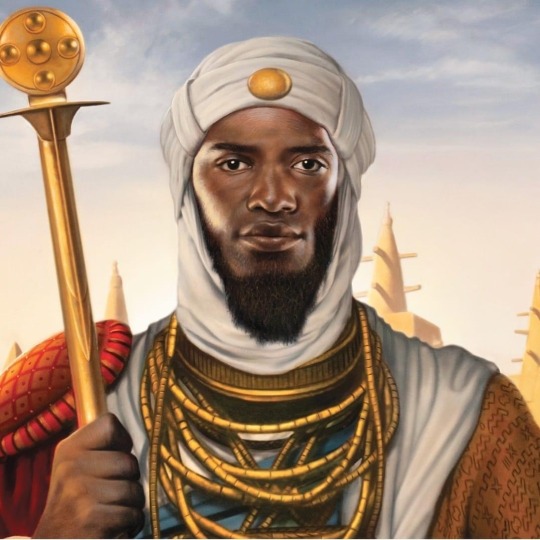
White people ask, why has there never been a powerful African nation like Rome, Persia, or the Aztecs?
Wait, seriously? “Never been a powerful African nation," says who exactly?
I’d presume you’ve never heard of some of these before:
ZULU KINGDOM. They crushed the British in their first battle and wrecked havoc on the Boers.The Zulu Kingdom, sometimes referred to as the Zulu Empire or the Kingdom of Zululand, was a monarchy in Southern Africa that extended along the coast of the Indian Ocean from the Tugela River in the south to Pongola River in the north.
MALIAN EMPIRE. Home to one of the richest Kings in human history. The Mali Empire was an empire in West Africa from c. 1226 to 1670. The empire was founded by Sundiata Keita and became renowned for the wealth of its rulers, especially Mansa Musa. The Manding languages were spoken in the empire.
KINGDOM OF AXUM. One of the centers of African civilization centuries before any European civilization. The Kingdom of Aksum, also known as the Kingdom of Axum or the Aksumite Empire, was a kingdom centered in Northeast Africa and South Arabia from Classical antiquity to the Middle Ages.
ANCIENT EGYPT. One of the centers of civilization. The civilization of ancient Egypt began in the Nile River valley of northeastern Africa. Ancient Egypt was one of the world's first civilizations. It is also one of the most famous civilizations in history.
KINGDOM OF KUSH. Which has more pyramids than Egypt by the way. The Kingdom of Kush was an ancient kingdom in Nubia, centered along the Nile Valley in what is now northern Sudan and southern Egypt. The region of Nubia was an early cradle of civilization, producing several complex societies that engaged in trade and industry.
THE KINGDOM OF DAHOMEY - This was a West African kingdom located within present-day Benin that existed from approximately 1600 until 1904.
THE KINGDOM OF BENIN - Also known as the Edo Kingdom, or the Benin Empire was a kingdom within what is now southern Nigeria. It has no historical relation to the modern republic of Benin, which was known as Dahomey from the 17th century until 1975.
THE GHANAIAN EMPIRE - Also known as Wagadou (Arabic: غانا) or Awkar, was a West African empire based in the modern-day southeast of Mauritania and western Mali that existed from c. 300 until c. 1100. The Empire was founded by the Soninke people, and was based in the capital city of Koumbi Saleh.
KONGO KINGDOM. Prior to the Portuguese arrival, Kongo was developed with a large commercial network. The kingdom melted copper and gold and traded it with products such as raffia cloth and pottery. The kingdom was a superpower and center of trade routes for ivory, copper, raffia cloth, and pottery.
ASHANTI EMPIRE. One of the most powerful and wealthiest states of the 18th-19th century.
The Asante Empire, today commonly called the Ashanti Empire, was an Akan state that lasted between 1701 to 1901, in what is now modern-day Ghana. It expanded from the Ashanti Region to include most of Ghana as well as parts of Ivory Coast and Togo.
The various African Kingdoms and empires were quite well known in Imperial Persia. The Sassanid & Nubian Kings in particular were quite familiar with each other. In fact, Persian traders and travelers extensively traveled the coastlines of modern-day East & North Africa bringing back various cuisines, spices, technologies, and in certain instances; slaves and laborers. Many Africans who came to Iran even became highly skilled soldiers and commanders in the Imperial Sassanid Army.
Moors is a term generally used by Europeans to describe the Muslim people of North Africa and the Iberian Peninsula during the Middle Ages. Between 711 C.E. and 1492 C.E. Muslim people of African descent controlled parts of Iberia which consist of modern-day Spain and Portugal, they ruled and civilized Europe.
Since the Moors ruled Spain for about 800 years, they had time to bring scientific techniques to Europe such as the astrolabe, a device to measure the position of the planets and stars. There was scientific progress in chemistry, mathematics, philosophy, astronomy, physics, and more.
Africans share strong historic ties with Turkey as the Ottoman Empire, its predecessor state, not only recruited tens of thousands of Africans into its army but also employed a large number of them in both the royal court and palace.
67 notes
·
View notes